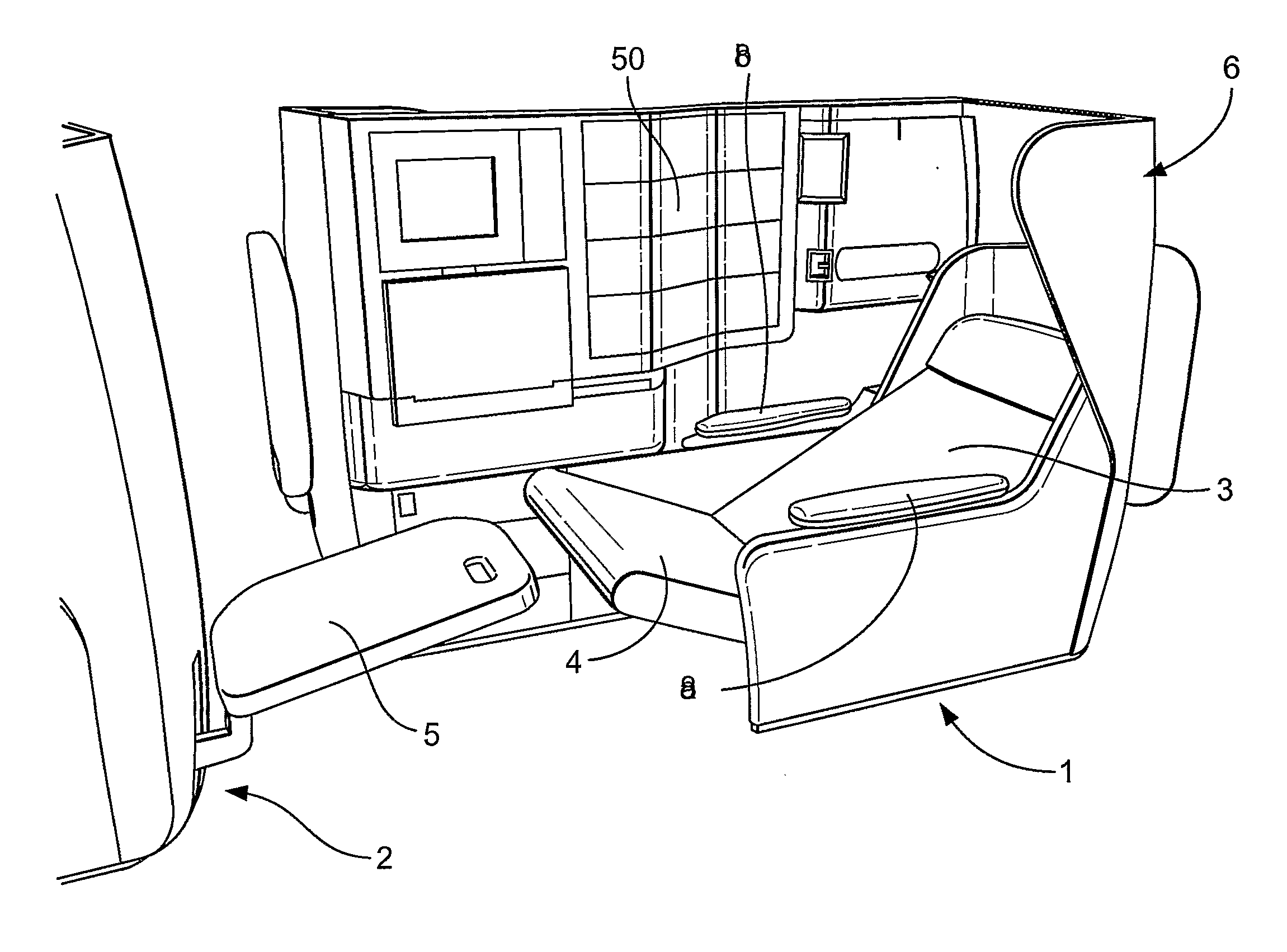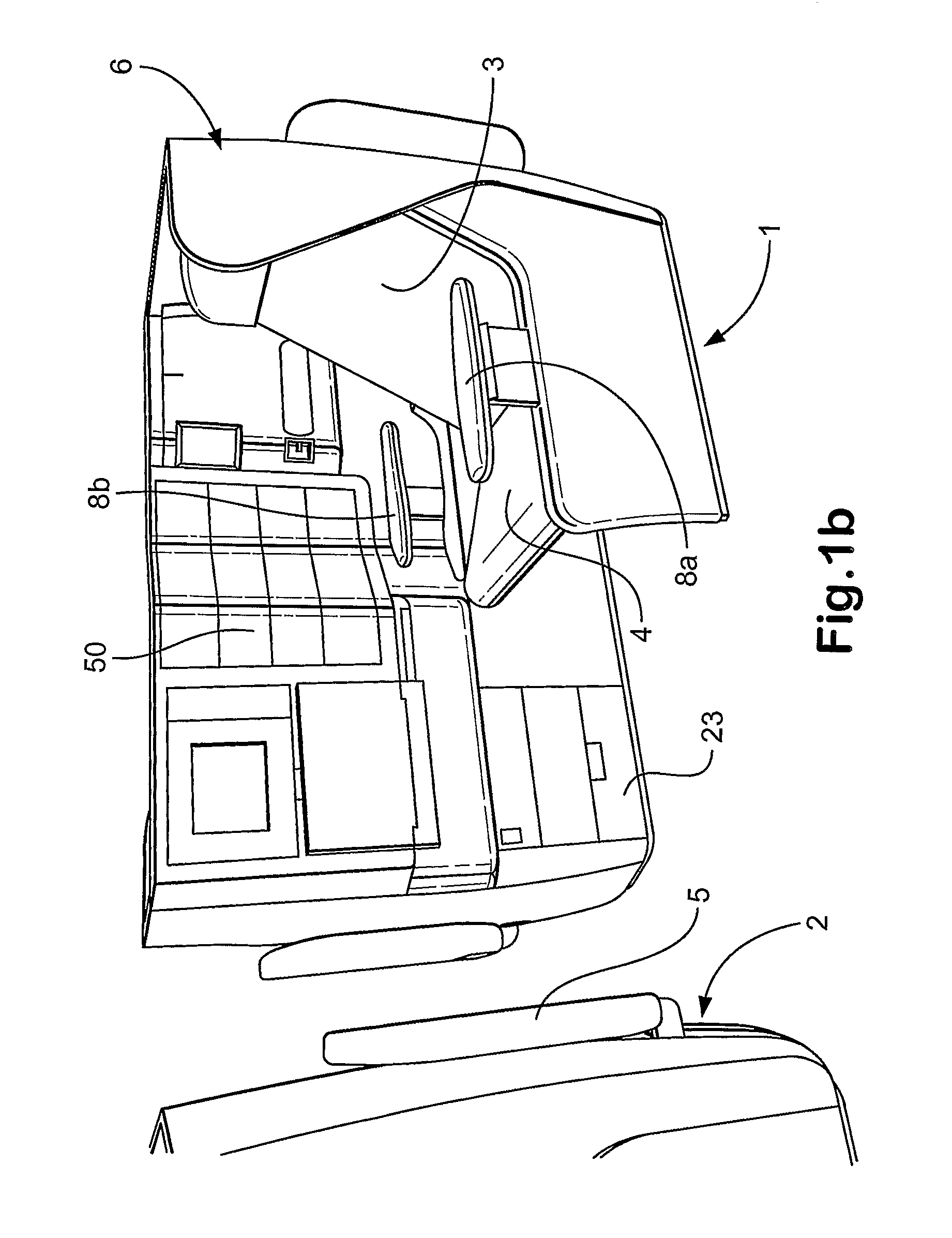Aircraft Passenger Seat
- Summary
- Abstract
- Description
- Claims
- Application Information
AI Technical Summary
Benefits of technology
Problems solved by technology
Method used
Image
Examples
first embodiment
[0079]FIGS. 7a and 7b show a first embodiment of the armrest mechanism in the raised and lowered positions respectively. In the raised position, the lower surface of the armrest support 9a, 9b rests on a pin 30, moveable reciprocally along a substantially vertical arcuate track 31 in the upper frame 11 and connected by a first linkage 32 to a fixed first pivot 33 located on the upper frame 11 forward of the armrest support 9a, 9b, and connected by a second linkage 34 to a second pivot 35 moveable reciprocally along a substantially horizontal arcuate track 36 in the upper frame 11. As the second pivot 35 moves forward along the horizontal arcuate track 36 from the position shown in FIG. 7a to that shown in FIG. 7b, the pin 30 falls along the substantially vertical arcuate track 31 as the first and second linkages 32, 34 rotate clockwise, and the armrest support 9a, 9b falls under gravity, following the pin 30, until the armrest support 9a, 9b comes to rest on stops 37. The lower surf...
second embodiment
[0081]A second embodiment of the armrest mechanism is shown in FIGS. 7c and 7d. Similar parts to the first embodiment carry the same reference numerals. In this embodiment, the first linkage 32 is not present, and the armrest mechanism has a single linkage 34, the lower end of which comprises the pivot 35 moveable reciprocally along the substantially horizontal arcuate track 36 in the upper frame 11. The upper end of the single linkage 34 comprises the pin 30 which is moveable along the substantially vertical arcuate track 31.
[0082]As the seat is moved into an upright position, a lifter blade 38 fixed to the drive rail 13 abuts the pivot 35 and pushes it rearwardly along the substantially horizontal arcuate track 36 so that the pin 30 rises in the substantially vertical arcuate track 31 and pushes the lower surface of the armrest support 9a, 9b into the raised position. As the seat reclines, the pivot 35 is biased against the lifter blade 38 and moves forwards with the lifter blade ...
third embodiment
[0084]FIGS. 7e and 7f show a third embodiment of the armrest mechanism in the raised and lowered positions respectively. Similar parts to the first and second embodiments carry the same reference numerals and their description will not be repeated except where necessary.
[0085]In common with the first embodiment, the armrest mechanism of the third embodiment comprises first and second linkages 32, 34, rather than the single linkage 34 of the second embodiment. The first and second linkages 32, 34 are biased towards a collapsed position as shown in FIG. 7f, whereby the armrest support 9b is biased into the lowered position. In this example, the bias is applied by springs 32′, 34′ connected between the upper frame 11 and the first and second linkages 32, 34 respectively.
[0086]The armrest mechanism is moved from the lowered position to the raised position of FIG. 7a by lifter blade 38 (not shown) similar to that of the second embodiment, which abuts the second pivot 35 and moves it alon...
PUM
 Login to View More
Login to View More Abstract
Description
Claims
Application Information
 Login to View More
Login to View More - R&D
- Intellectual Property
- Life Sciences
- Materials
- Tech Scout
- Unparalleled Data Quality
- Higher Quality Content
- 60% Fewer Hallucinations
Browse by: Latest US Patents, China's latest patents, Technical Efficacy Thesaurus, Application Domain, Technology Topic, Popular Technical Reports.
© 2025 PatSnap. All rights reserved.Legal|Privacy policy|Modern Slavery Act Transparency Statement|Sitemap|About US| Contact US: help@patsnap.com



